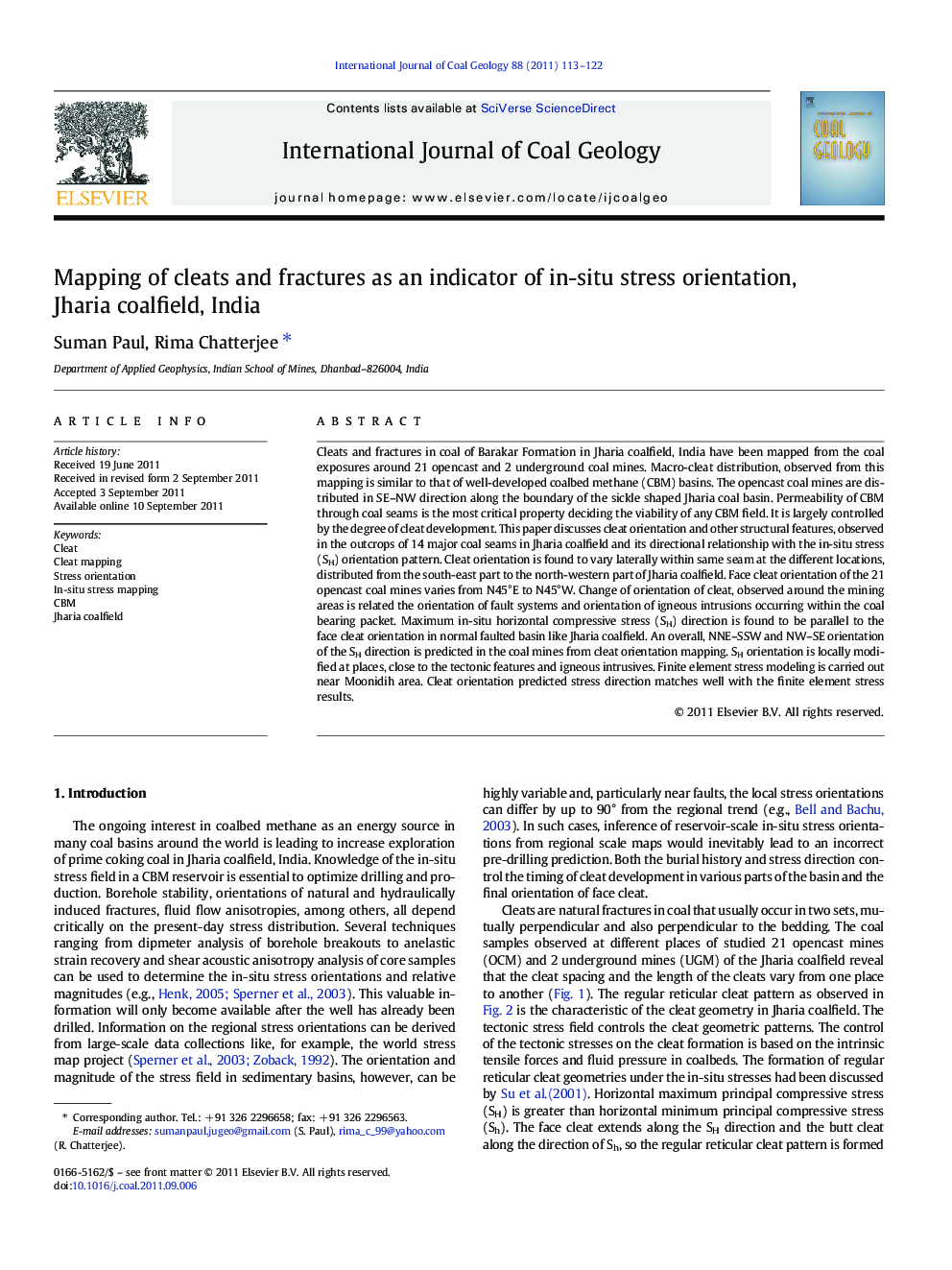| Article ID | Journal | Published Year | Pages | File Type |
|---|---|---|---|---|
| 1753778 | International Journal of Coal Geology | 2011 | 10 Pages |
Cleats and fractures in coal of Barakar Formation in Jharia coalfield, India have been mapped from the coal exposures around 21 opencast and 2 underground coal mines. Macro-cleat distribution, observed from this mapping is similar to that of well-developed coalbed methane (CBM) basins. The opencast coal mines are distributed in SE–NW direction along the boundary of the sickle shaped Jharia coal basin. Permeability of CBM through coal seams is the most critical property deciding the viability of any CBM field. It is largely controlled by the degree of cleat development. This paper discusses cleat orientation and other structural features, observed in the outcrops of 14 major coal seams in Jharia coalfield and its directional relationship with the in-situ stress (SH) orientation pattern. Cleat orientation is found to vary laterally within same seam at the different locations, distributed from the south-east part to the north-western part of Jharia coalfield. Face cleat orientation of the 21 opencast coal mines varies from N45°E to N45°W. Change of orientation of cleat, observed around the mining areas is related the orientation of fault systems and orientation of igneous intrusions occurring within the coal bearing packet. Maximum in-situ horizontal compressive stress (SH) direction is found to be parallel to the face cleat orientation in normal faulted basin like Jharia coalfield. An overall, NNE–SSW and NW–SE orientation of the SH direction is predicted in the coal mines from cleat orientation mapping. SH orientation is locally modified at places, close to the tectonic features and igneous intrusives. Finite element stress modeling is carried out near Moonidih area. Cleat orientation predicted stress direction matches well with the finite element stress results.
► Orientation of maximum horizontal stress (SH) estimated from cleat data is mostly N-S varying from NNE-SSW to NNW-SSE in this study area. ► Finite Element Model (FEM) predicted stress result matches well with the estimated stress orientation from cleat data. ► The estimated (SH) orientation is same as inferred from earthquake or from FMI log by previous researchers.
